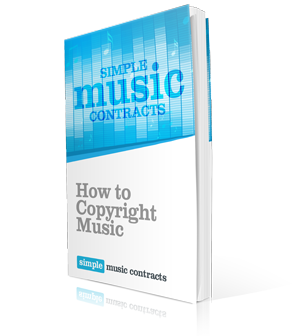Written by US Music Attorney with 20 Years Experience
Download Instantly in Word
Five New Contracts a Month
One Year of Updates
A Look At Music Licensing
Generally speaking, movies and television shows are produced to extract some kind of emotion from viewers. And this often cannot be achieved by visuals and acting alone, no matter how incredible the cinematography and performances may be. So, since the beginning of motion pictures, music has been used to add emotional resonance to specific scenes. Think of some of your favorite movies that just wouldn’t have touched you the same way had a particular song not been playing in the background of your favorite scene.
It stands to reason, then, that the artists providing these compositions to directors should be compensated for their vital additions, and this has proven throughout the years to be one of the biggest income providers to artists—be they the musicians, songwriters or both. Some artists make their living purely off licensing their songs to different movie and television venues. Obviously, the amount of money paid to license these songs will change from situation to situation, as will the method in which the artists are paid, be it by a percentage of sales or a flat fee. To guarantee these payments, the terms must be agreed to and then written in a licensing contract. These contracts will contain at least the following stipulations:
- Parties Involved – First, the contract will state the publisher who owns the rights to the composition and the producer wishing to license the song. The contract will also name the motion picture where the songs will be used.
- Non-Exclusive Right – This section allows the producers to use the composition in any way allowed by the contract, meaning they have the authority to copy the song and synchronize it with the film, as well as the right to show and distribute the film using the song.
- Composition – This will be one of the most variable points in different licensing contracts, as this portion of the agreement may state that a flat fee is due to the performer and/or songwriter, or it may state that a percentage of royalties will be offered. In the latter case, this section will further break down these percentages and how they apply specifically to different methods of distribution.
- Distribution – The aforementioned distribution methods will be further examined in this separate section, as some contracts will state the contract may apply to theater distribution of a film, but must be renegotiated for home video release. The same can apply to first run TV shows as opposed to syndicated runs or home video release.
The remainder of the contracts will outline other conditions in which the song can and cannot be used. For instance, many will include a clause stating the song cannot be significantly altered for use in the motion picture. Often, the contract will dictate if and how the song may be used when the motion picture is distributed outside the United States. As with many other music contracts, the licensing contract will also state that the two parties are independent of each other and contain terms in which the contract can be terminated.
Without music in motion pictures, the medium would suffer significantly in its poignancy. And without licensing their songs to films and television shows, many artists would lose their careers. Licensing contracts are in place to increase the likelihood that neither of these situations occur.

